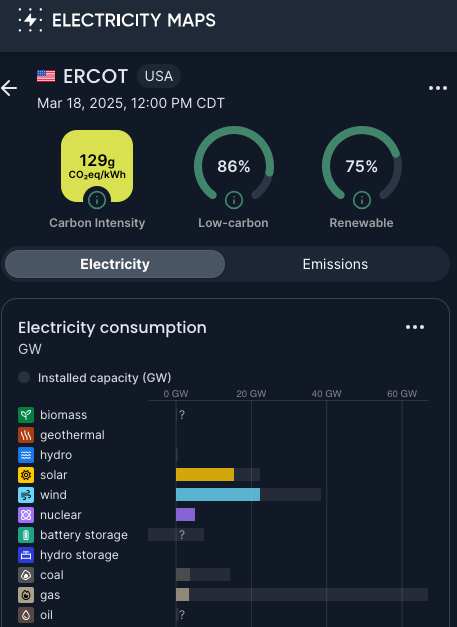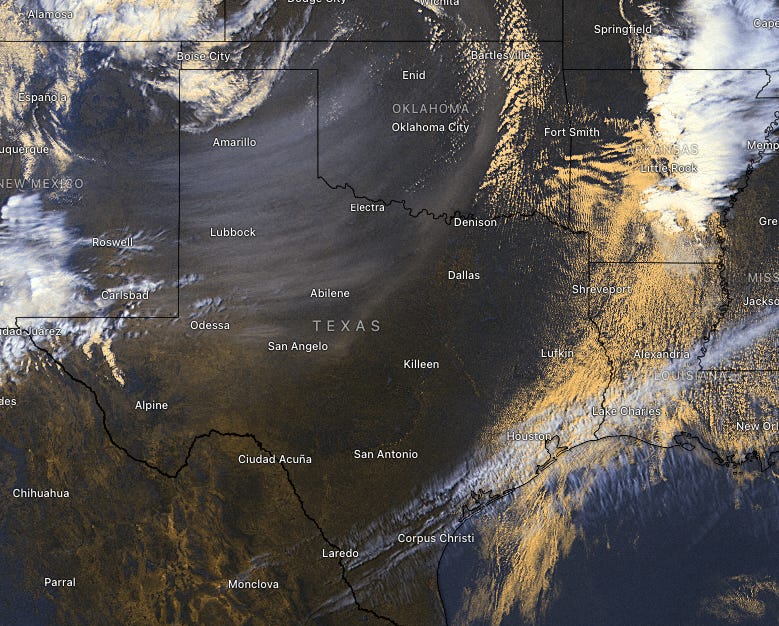Solar + Wind Hits Nearly 40 GW In Texas
Solar + Wind set a new combined record, falling just 54 MW short of 40 GW, while providing seasonal reliability as thermal outages soar. Extreme winds highlight the challenges to grid reliability.
Texas set yet another renewable generation record yesterday: 39,946 MW combined wind + solar production! Beating the old record by nearly 1000 MW, wind made up the majority with 23,809 MW and solar contributing 16,137 MW, a 60/40 split:
Renewable Reliability
The solar + wind record was the final domino to fall in a record setting shoulder season for renewables in Texas, with wind, solar and battery storage each setting new individual highs in the past few weeks thanks to favorable wind and solar conditions and significant thermal outages due to (mostly) planned maintenance. This highlights the value renewables bring to the grid, not only putting downward pressure on wholesale prices but providing seasonal reliability, keeping PRC mostly above 9,000 MW on a day with more than 27,000 MW of thermal outages.
Working 9 to 5 (and beyond)
Renewables share of system load ran north of 70% from 9 am to - 5 pm, topping out around 75% which seems to be the ERCOT-imposed limit (as I've previously discussed.) Gas and coal each ran around 7% for hours, some of the lowest levels seen this year. Carbon intensity ran as low as 129 g CO2eq/kWh and the fuel mix topped out at 86% low carbon generation (wind + solar + nuclear).
As BESS capacity grows in the coming months and years it has the potential to smooth the "cowboy hat curve" and flatten the net load ramp in the mornings and evenings, soaking up excess renewable generation and shifting that production to peak demand hours in the morning and evening. With only 10 GW of total system capacity, we're just scratching the surface of what's possible.
High Winds, Low Output
Last week saw higher system load driven by high temps and cooling demand, but hurricane force winds gusting over 80 mph in west Texas and the Panhandle forced significant numbers of turbines to shut down and the ensuing dust storm was visible from space, affecting solar production as well. These extreme conditions wreaked havoc across the region, grounding flights at DFW, flipping tractor trailers near Lubbock, sparking wildfires in the panhandle and north to Oklahoma, and causing downed lines and outages for tens of thousands of customers.
Extreme Weather Threatens All Generation Sources
Despite the impressive performance of renewables this spring, these extreme conditions highlight the challenges wind and solar generation face in extreme weather. (I wrote in my previous post predicting this combined record that wind forecast was favorable to max out wind generation; turns out it was too favorable!) Gas is the primary backstop for renewables currently, ramping up and down fairly rapidly and filling the gaps well. But gas (and coal) are not impervious to weather extremes either, as we saw most dramatically with Winter Storm Uri 4 years ago, with supply pipelines and coal piles freezing. Battery storage is perhaps the most reliable grid asset in extreme conditions, and as capacity grows, so too should system reliability. As extreme weather conditions increase in intensity and frequency with the effects of climate change, having a diverse mix of generation resources that are appropriately weatherized and hardened is imperative to grid reliability.
Distributed Generation Solutions for Fractal Reliability
A holistic approach to reliability and resilience is needed, however. As the extreme weather last week demonstrated, over 90% of power outages occur on the distribution grid, so-called “last-mile infrastructure” and no amount of centralized generation reliability can prevent that. To achieve true grid resilience and reliability massive investments and build-outs are needed to harden the distribution infrastructure and deploy more distributed generation and storage capacity to build towards "fractal reliability" a phrase borrowed from Pier LaFarge of Sparkfund. His distributed generation procurement model is a great example of leveraging centralized planning to build a more distributed, and therefore more resilient and optimized grid.









